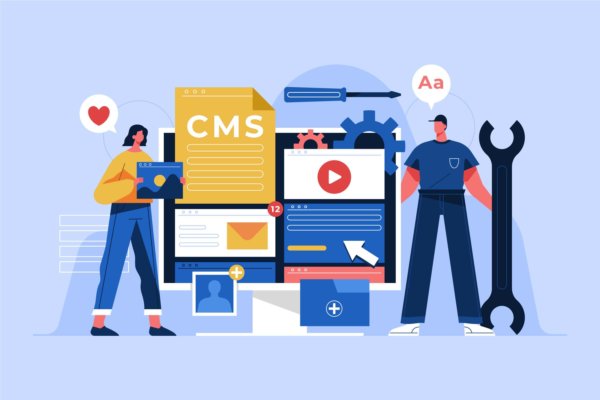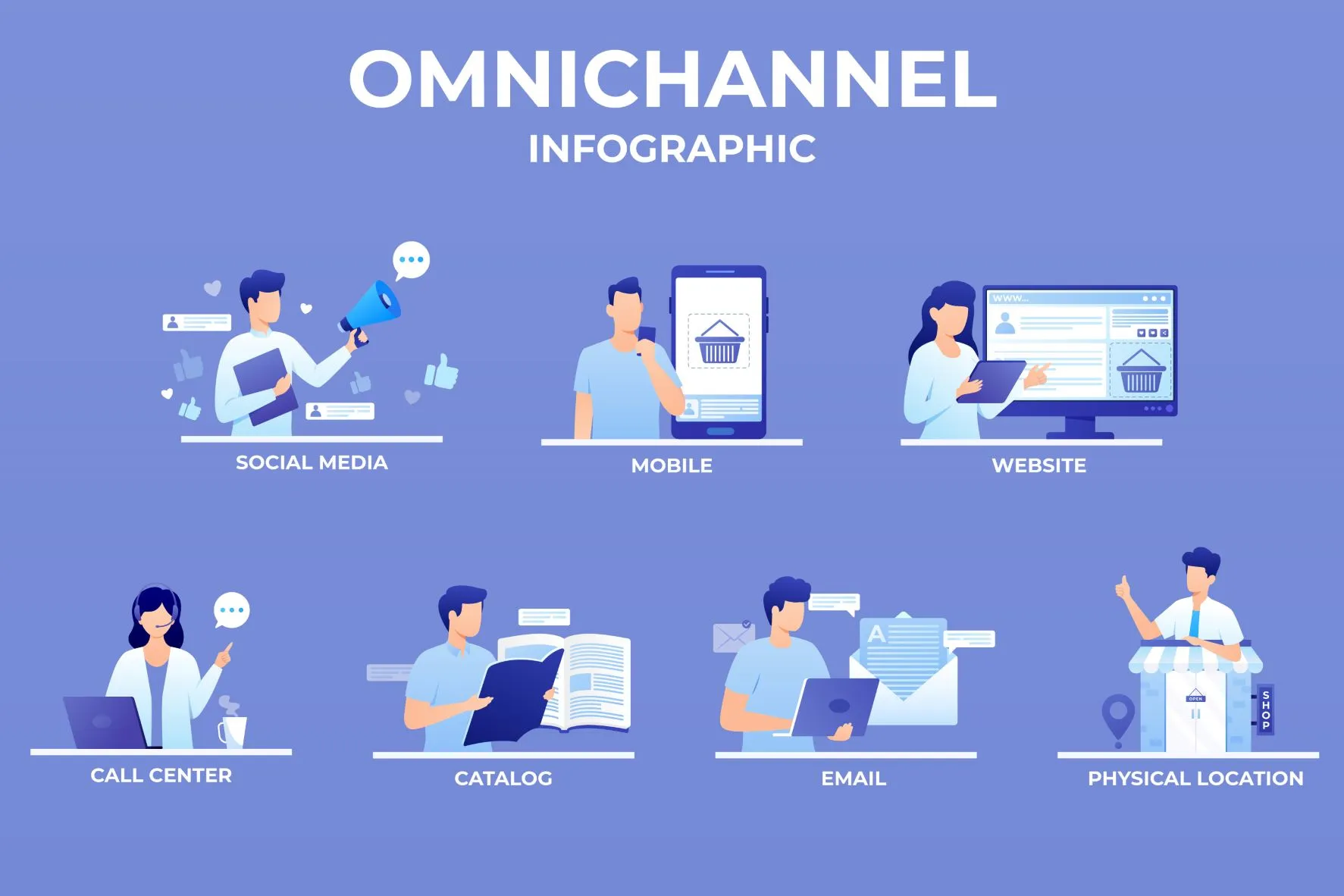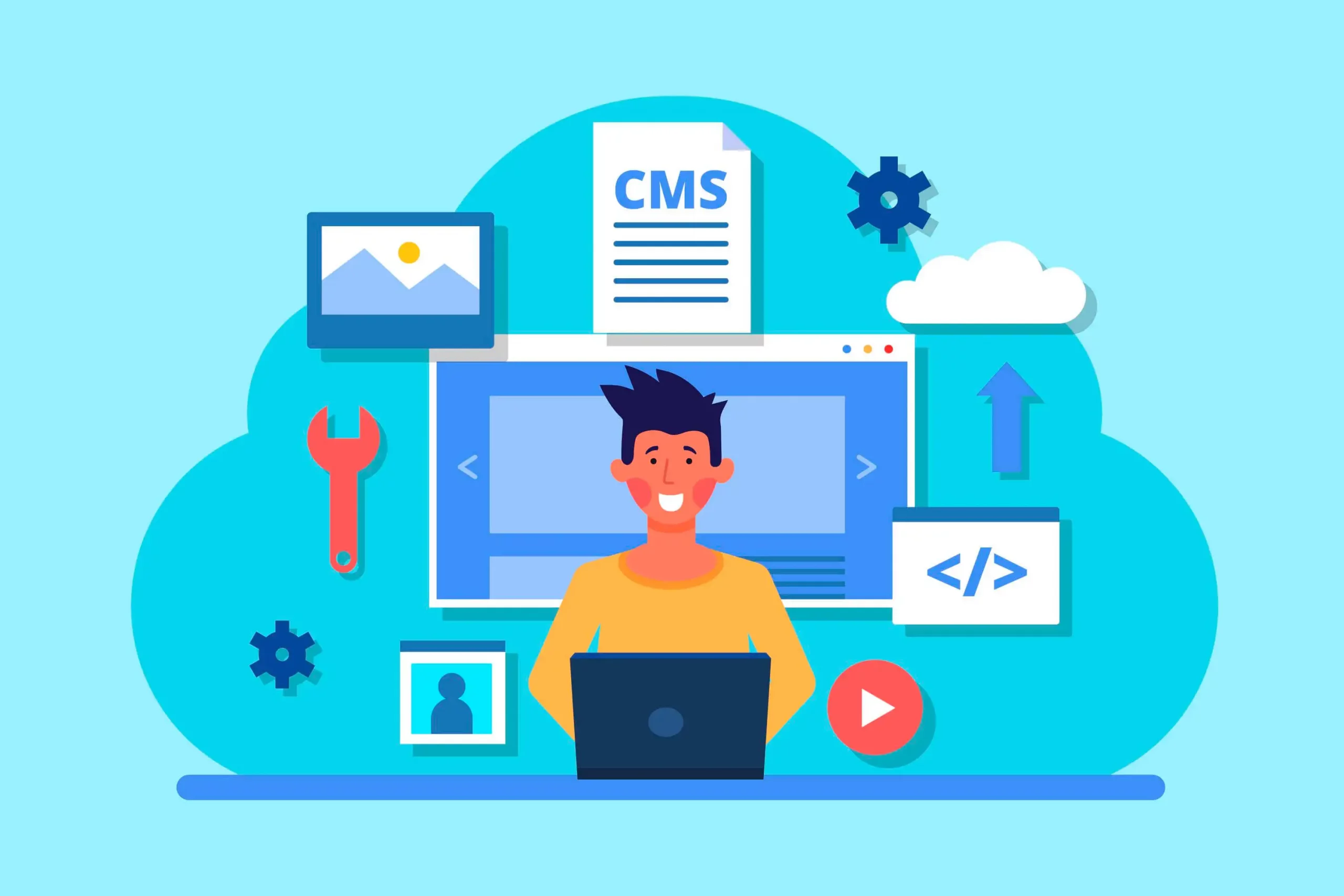See into the future of websites & eCommerce stores by learning more about Headless CMS. Find out what is headless CMS (content management system), how it works and why you should have it.

- What is a headless CMS?
- How a Headless CMS Works?
- Why should you adopt a headless CMS solution?
- Why headless CMS is the right solution for your project?
- What are the benefits of using headless CMS?
- Tell me the difference between Headless and Decoupled Content Management?
- Headless content management system & static site generators
- What are some types of top systems for Headless Content Management?
- What are some hosting options available with decoupled CMS architecture?
- Is headless CMS a good idea?
Headless CMS is a great way to not only keep up with the technology, but to stay ahead 🚀. Headless content management system allows your online content to be future-proof. This CMS separates the body of your content from the presentation aspect. Headless CMS is just another aspect in this practice of decoupling, when developing websites.
What is a headless CMS?
A headless CMS is a content management system managing and arranging content without a connected frontend. The headless CMS houses the entire contents of your site. You can then create an API to send this content around the web – website mobile applications – marketing emails – CRMs. Tell me the reality. The part who cares about the presentation is called “head” – as much as our body cares about presenting our heads.
In the IT industry, when talking about CMS systems, we often compare it to a human body.
- Firstly, we have the muscular system, which for a CMS system is the editor interface.
- Secondly, we have the nervous system, which is the database where we store all our files.
- Lastly, we have the integumentary system, which is the front end. The front end is essentially what the visitor will see when entering our website.
The point of a headless CMS is, not, to eliminate the need for a head. On the contrary, the headless CMS, gives us the power to change how we present our content. Headless CMS allows you to have multiple heads. You can expand, grow and change the way you present your content. You can do all this without having to redo your entire website. Do you want to learn more about headless CMS? Click 👉 Headless CMS in 7 minutes 👈to learn more.
Headless CMS is especially popular among website architectures such as Jamstack. Furthermore, it is popular on eCommerce platforms such as Shopify and BigCommerce.
How a Headless CMS Works?
As mentioned before, Headless CMS decouples your content from the presentation. This modern system takes your content and delivers it through an API directly to where you need it to go. This flow of information delivers your content to Jamstack websites. Additionally, content is being delivered to web applications, and mobile applications (android, ios).
Jamstack websites are based on Headless CMS to provide fast-loading, secure, SEO-friendly websites. If you want to find out more about Jamstack, click 👉 Benefits of Jamstack 👈
This is such a robust tool in website & e-commerce development. A front-end developer can choose any technology they are familiar with to create your website. The same is true when creating eCommerce stores. They create a beautiful presentation for your customer, with no limitations. This is all thanks to the fact that we have a separate editor interface and presentation.
Why should you adopt a headless CMS solution?
You should adopt this solution because it will allow you to future-proof your current technology. Headless CMS is becoming more popular among developers and customers. This CMS allows you to upgrade your websites or e-commerce platforms. You can do this without having to alter the content.
Content Management on Multiple Channels
We live in an omnichannel world, this is why embracing headless CMS is important. This CMS allows you the user to provide content on websites, apps, newsletters, emails and so much more 💻. You can provide content on different channels without duplicating it. Moreover, you no longer have to manage several copies. All of your content is stored in one file or database, the only thing that changes is its presentation.

Why headless CMS is the right solution for your project?
Here are a number of reasons why you want this modern solution for your next project:
1. Improved page performance
The last thing you want is a slow website. A slow-loading webpage is bad for business. Headless content management systems provide you with a rapid webpage 💥. How does it do this? This modern CMS solution is API-driven. As opposed to relying heavily on different plugins, which decreases page performance.
2. Security and protection against attacks
When using a decoupled CMS, you are separating the content aspect from the presentation aspect. The separation of these two elements limits the window of possibility of hacking and cyberattacks.

What are the benefits of using headless CMS?
Here are some key benefits of using headless CMS:
- Headless CMS is a popular solution in Jamstack websites. A website developed on Jamstack offers the ability to support multiple content systems from one panel, as opposed to several panels.
- The separation of code and content makes life easier for both content creators and developers alike. The content editor can focus on writing & creating without worrying about the coding aspect of web making. On the other hand, the developer can focus on coding, without fussing over the content elements.
- This CMS also provides a positive experience for developers. Developers are eager to work with headless content management systems because it provides them the opportunity to work with the newest technologies. Developers are no longer locked down with coding languages and other system limitations. IT specialists are able to use modern tools, frameworks etc.
- Content is being delivered by an API. This makes for a content experience to be created faster. Furthermore, it is easier to integrate, manipulate, and supply this content to websites, ecommerce stores, and web applications.
Tell me the difference between Headless and Decoupled Content Management?
Traditionally, content management systems allow companies to publish content through mobile apps or websites. It also controls how the website appears, its creation, and its display. Unlike CMCS heads, headless CMS is somewhat different. It lets companies manage content without the need to know where the site will be displayed. In addition, brands can use almost any front-end tool to provide the content — meaning they can reach any channel, from kiosks to smartwatches and VR headsets.
Headless CMS vs traditional CMS
Here are some key aspects that make these two content management systems different:
Platform independence
Headless CMS gives developers the opportunity to separate the back-end and front-end platforms. In a traditional CMS, however, the backend is very much dependent on the front end.
Customizing & Editing
Traditional CMS can make editing or customizing certain elements of your website complicated. Furthermore, there are limitations in customization with traditional CMS.
When we look at headless CMS, it makes customization really easy. This is due to the decoupling of content and presentation. Additionally, you are able to use tools that are widely available. You are not dependent on plugins and frameworks as you would be with traditional CMS.

Scalability
Headless CMS is better at handling growth than a traditional CMS. A decoupled CMS allows you to distribute your content through various channels seamlessly. You can easily supply your content to websites, online shops, and web applications.
Traditional CMS can struggle with growth. This struggle exists for a number of reasons. Firstly, using traditional CMS, you need to duplicate your content for each platform. You need to customize these duplicate copies and manage them to suit any given channel. Furthermore, traditional CMS uses caches along with other updates to manage growth and heavy traffic. Headless CMS manages growth and heavy traffic automatically, it does not require extra work from the developer.
Headless CMS and SEO
SEO is different in headless CMS. You no longer rely on plugins for SEO readiness and management. This future-proof CMS provides you with a stronger SEO than that of traditional CMS. It allows you as the content editor to write better metadata. Furthermore, you can edit your content easily and at any moment. Moreover, you can edit this content for any device.
A headless content management system allows you to configure SEO factors in any way that is beneficial to you and your website’s page performance. You can configure aspects such as breadcrumbs, structured content, taxonomies, metadata, and much more.
Headless content management system & static site generators
Headless CMS is typically used on websites that are developed via Jamstack. These sites are hosted on a CDN (content delivery network). Any website that is hosted on CDN is not tied to a server. Your content does not need to be rendered, it is available to the user via static pages. Moreover, the static pages are accessed from the closest CDN.
For example, if you are in Texas, accessing a European website. The content may be accessed from a CDN based in California.
What is a static site generator?
A static site generator (SSG) is a tool that will build your content file into a static page. It will take content that you have inputted in headless CMS solutions and apply a given template. Based on this template, you will have a generated a static webpage. Static site generators are a big upgrade for users because they build the demand for the website before it is even requested. The same cannot be said when it comes to WordPress sites.
Do you want to check the health of your website?

What are some types of top systems for Headless Content Management?
While most headless CMS were built to be used for the IoT era. Some companies have rebranded and realigned their technologies to offer headless content management. Several web development companies advertise Headless CMS. Many have the flexibility to meet brand management requirements. To encourage small and growing businesses in the adoption of headless technology. We’ve assembled a list of some top content management options.
Contentful
Contentful is a typical API-driven headless content architecture. It primarily focuses on the backend and the content.
Contentful provides developers with complete access to content, digital assets, and translation tools. Caching techniques are used in CDN integration to provide API payloads in sub-100-ms range. It displays JSON code snippets, a rich text editor, and a Content Modeling feature. Pricing: Free premium or business plans are available.
This content model is highly recommended for small to medium-sized companies.
Sanity.io
Sanity is one of the leading content management systems around the world. It is especially popular when looking for a headless cms solution. Sanity offers developers flexibility. Sanity gives developers the ability to highly customize content structures. Content customisation using of Javascript frameworks and React.
Prismic
A fun fact about Prismic headless cms solution it is used by popular cooperations such as Google and Netflix. Prismic gives the developer access to various tools and frameworks. The use of the this content architecture makes creating content & content editing simple.
Prismic provides headless CMS for SaaS that has an integrated editor, custom-designed templates, multi-language support and a complete revision history. The app offers an advanced web interface to fetch and manage content. Prismic includes integration with eCommerce platforms such as Shopify and Magento. Prismic also has an SDK to help users build applications within their chosen framework and language. Prices: Free premium plans are provided.
Strapi
Strapi is another popular alternative to traditional cms architecture. This platform is Node js. based and is open sourced. The cms architecture Strapi is great for someone who is looking to switch to headless content. It is easy to use due to an API framework. You can power websites on desktops, web apps and so much more.
Storyblok
Storyblok is another option when managing content. Furthermore, Storyblok is popular because it drastically shrinks the time you need to build a webpage. Using Storyblok for content creation can be done with just a few clicks.
What are some hosting options available with decoupled CMS architecture?
Some popular hosting & deployment options that can be used with headless architecture and Jamstack sites, include:
Vercel
Vercel is an excellent platform because it is serverless. It is tailored to static and hybrid applications. It was created to integrate with headless content, among other things. Furthermore, Vercel helps unify all aspects of content that were previously decoupled.
Netlify
Netlify is another great platform for deploying websites that use headless CMS. It helps manage content so that developers can focus on coding. Additionally, Netlify, similarly to Vercel, will combine the content repository with the presentation layer. This combination will give your user a beautiful web page or eCommerce shop.
Is headless CMS a good idea?
Although Headless Content management systems can improve the user experience for developers, it might not be useful if you have a few pages on a site. The simplest way to use a standard CMS on small projects can be quicker and easier than done. Content publishing outside of websites – where no website power is needed. If you like the idea of a headless CMS, you can 👉 contact us 👈
Comments